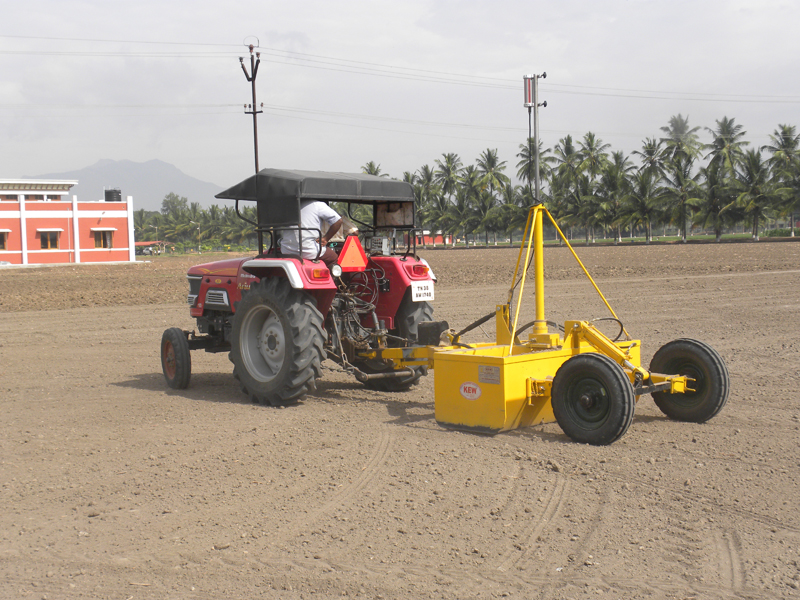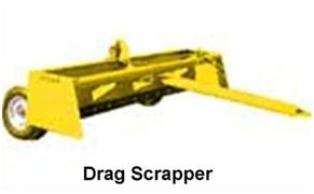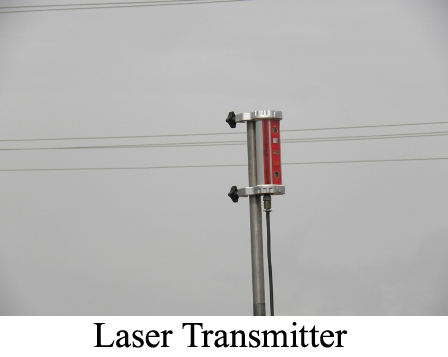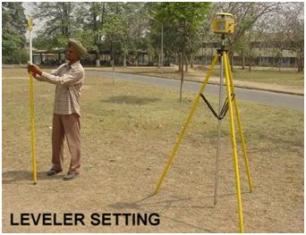|
Main Field Preparation
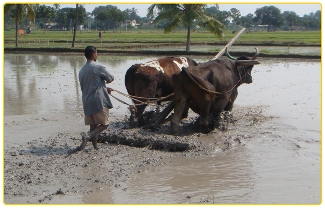 |
| Soil Condition Required |
|
- Soils with good water retention capacity with high amount of clay and organic matter are ideal for rice cultivation.
- Clay or clay loams are most suited for rice cultivation.
- Such soils are capable of holding water for long and sustain crop.
- Rice being a semi-aquatic crop, grows best under sub-merge conditions.
- Rice is cultivated in almost all types of soils with varying productivity.
- The major soil groups where rice is grown are riverine alluvium, red-yellow, red loamy, hill and sub-montane, Terai, laterite, costal alluvium, red sandy, mixed red, black, medium and shallow black soils.
- It grows well in soils having a pH range between 5.5 and 6.5.
|
 |
Special technologies for problem soils
:
- For fluffy paddy soils: compact the soil by passing 400kg stone roller or oil-drum with stones inside, eight times at proper moisture level (moisture level at friable condition of soil which is approximately 13 to18%) once in three years to prevent the sinking of draught animals and workers during puddling.
-
For sodic soils: For sodic soils with pH values of more than 8.5, plough at optimum moisture regime, apply 50% of total gypsum requirement uniformly, impound water, provide drainage for leaching out soluble salts and apply green leaf manure at 5 t/ha, 10 to 15 days before transplanting. Mix 37.5kg of Zinc sulphate per ha with sand to make a total quantity of 75kg and spread the mixture uniformly on the leveled field. Do not incorporate the mixture in the soil. Rice under sodic soil responds well to these practices.
-
For saline soils: For saline soils with EC values of more than 4 dS/m, provide lateraland main drainage channels (60cm deep and 45cm wide), apply green leaf manure at 5 t/ha at 10 to 15 days before transplanting and 25% extra dose of nitrogen in addition to recommended P and K and ZnSo4 at 37.5 kg/ha at planting
-
For acid soils: For acid soils apply lime based on the soil analysis for obtaining normal rice yields. Lime is applied @ 2.5t/ha before last ploughing. Apply lime at this rate to each crop upto the 5th crop.
|
|
| Top |
|
Tillage Practices |
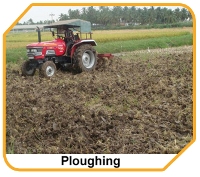 |
Primary tillage
Ploughing
Ploughing is the primary tillage operations, which is performed to cut, break and invert the soil partially or completely suitable for sowing seeds.
Special technologies for problem soils
- To obtain a deep seed bed of good texture.
- To increase the water holding capacity of the soil.
- To improve soil aeration.
- To destroy weeds, insects and pests.
- To add fertility to the soil by covering vegetation.
|
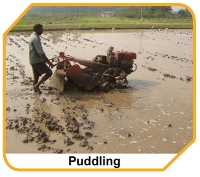 |
Secondary tillage
Harrowing
Harrowing is a secondary tillage operation which is done to a shallow depth for smoothening and pulverizing the soil as well as to cut the weeds and to mix the materials with the soil.
Purpose of harrowing
- To pulverize the soil of the seedbeds in the field.
- To destroy grasses and seeds in the field.
- To cut crop residues and mix them with top soil of the field.
- To break the big clods and to make the field surface uniform and levelled.
- Harrowing is carried out when the moisture content of the clods are reduced.
Puddling
Puddling is churning the soil with water. It is done in paddy fields with standing water of 5-10 cm depth after initial ploughing with country plough. It breaks up the clods and churns the soil.
Purpose of puddling
- To reduce leaching of water or decrease percolation of water,
- To kill the weeds by decomposition.
- To facilitate transplantation of paddy seedlings by making the soil softer.
- To decrease water and nutrient losses by reduced hydraulic conductivity.
|
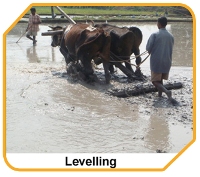 |
Levelling
Land levelling is expected to bring permanent improvement in the value of land. Levelling work is carried out to modify the existing contours of land for efficient agricultural production system
Purpose of Levelling
- Efficient application of irrigation water and increased conservation of rain water.
- Improve surface drainage and minimize soil erosion
- Provision of an adequate field size and even topography for efficient mechanisation.
- Perfect land leveling for efficient weed and water management.
- Improves better crop stands and crop establishment
|
|
| |
Top |
| Main Field Preparation in Tamil Nadu |
|
Transplanted Rice
- Plough the land during summer to economize the water requirement for initial preparation of land.
- Field is ploughed once or twice to obtain a good tilth.
- Flood the field 1 or 2 days before ploughing and allow water to soak in. Keep the surface of the field covered with water.
- Keep water to a depth of 2.5cm at the time of puddling.
- Apply 12.5 t of FYM or compost or green leaf manure @ 6.25 t/ha.
- If green manure is raised @ 20 kg/ha in situ, incorporate it to adepth of 15 cm using a green manure trampler or tractor.
- Apply 22 kg urea/ha at the time of first puddling while incorporating the stubbles of previous crop to compensate immobilization of N by the stubbles. This may be done at least 10 days prior to planting of subsequent crop.
- For SRI, 4-5 ploughing is required for preparing the land & in the last ploughing, we need to ensure it is upto a depth of 6 inches.
- Perfect levelling is a pre requisite for the water management in SRI.
|
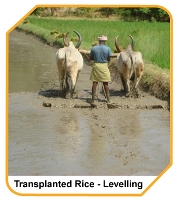
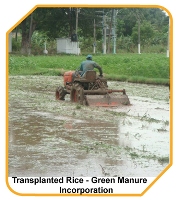
|
Direct Seeded Rice
Wet seeded rice
- On receipt of showers during the month of May-July repeated ploughing should be carried out so as to conserve the moisture, destroy the weeds and break the clods.
- After inundation puddling is to be done as per transplanting. More care should be taken to level the field to zero level.
- Stagnation of water in patches during germination and early establishment of the crop leads to uneven crop stand.
- Land leveling helps in efficient weed and water management practices.
- Provision of shallow trenches (15cm width) at an interval of 3m all along the field will facilitate the draining of excess water at the early growth stage.
|
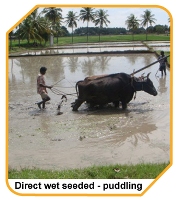
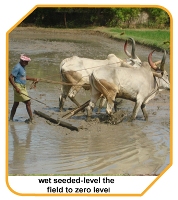 |
Dry seeded rice
- Dry plough to get fine tilth taking advantage of rains and soil moisture availability.
- Apply gypsum @ 1t/ha basally where soil crusting and soil hardening problem exist.
- Perfect land leveling for efficient weed and water management practices.
- Provision of shallow trenches (15cm width) at an interval of 3m all along the field will facilitate the draining of excess water at the early growth stage.
|
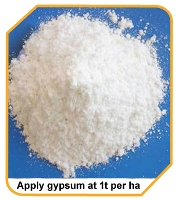
|
|
| Top |
|
Main Field Preparation in Kerala |
General
- Plough the field thoroughly to incorporate the weeds and straw into the soil. Ensure a smooth, level field for transplanting the seedlings.
- Apply organic manure in the form of farmyard manure or compost or green leaf @ of 5t/ha and incorporate into the soil while ploughing.
- The entire quantity of phosphatic fertilizers may be applied along with the organic manures.
|
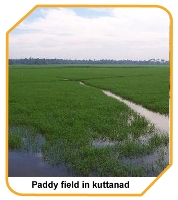 |
Kuttanad
- In Kuttanad, land lies below the sea level, the paddy fields situated along the waterways need to be protected by strong and carefully designed ring bunds.
- Construction of outer walls called ring bunds (puravarambu) around the particular portion of a shallow water body and draining the enclosed area by bailing water out of that enclosed portion at the beginning of every crop season.
- Plough the field thoroughly to incorporate the weeds in the field. Ensure a smooth and levelled field.
- Maintain a thin film of water to facilitate sowing so that the germinated seeds do not get covered with clayey soil, which affects seedling establishment.
|
Kole
- For the first crop in Kole, after the cessation of the heavy monsoon, dewatering is effected by petti and para or centrifugal pump and rarely by chakkram. Land is ploughed thoroughly and transplanting is done.
- For the second crop, land is prepared thoroughly and direct sowing of sprouted seeds or transplanting is done.
|
Onattukara
- With the onset of pre-monsoon showers, land is ploughed thoroughly.
- Dibbling of unsprouted seeds behind the country plough is the common practice.
|
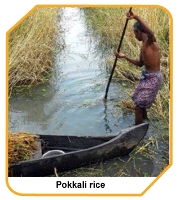
|
Pokkali
- The rice is cultivated from June to early November when the salinity level of the water in the fields is low.
- From mid-November to mid-April, when the salinity is high, prawn farming takes over after the rice harvest, feed on the leftovers of the harvested crop.
- By April, the bunds are being strengthened, fields are drained during low tide and sluices repaired for regulating water level.
- No other fertilizer or manure need in rice crop because of nutrients drawn from the prawns’ excrement and other remnants.
- Harvesting takes place by end-October. Only the panicles are cut and the rest of the stalks are left to decay in the water, which in time become feed for the prawns that start arriving in November–December.
|
|
| Top |
| Main Field Preparation in Karnataka |
|
- The main field is to be dry ploughed for twice three weeks before planting.
- Later, field may be ploughed with 5-10 cm of standing water 2-3 times. This process is known as puddling
- Incorporate 5-7 tonne of FYM or compost or 1 tonne of poultry manure per hectare or incorporate 10 tonne of green leaf manure three weeks before transplanting.
- The fertilizers recommended for basal application have to be applied before the last puddling and incorporated.
- After fertilization avoid moving of water from one field to another.
- Later, proper levelling has to be made before transplanting the seedlings.
- Dig the corners of field which are not covered by ploughing.
- Cut off 2.5 cm of soil from the top and sides of the bunds to remove the weeds along with their seeds and to destroy the eggs of insect pests by using spade.
- If the bunds are very broad, trim them to a width of 15 cm and height of 15 cm so that rats do not harbor in the bunds.
- If rat burrows are noticed, insert pellets of 0.5 g or 0.6 g aluminium phosphide and plug the exit holes.
- Apply mud paste to the side and top of the bund to a thickness of 2.5 cm with a spade and plaster it using the flat surface of the spade.
- Plastering the bunds helps in checking weed growth and prevents harboring of insect pests.
|
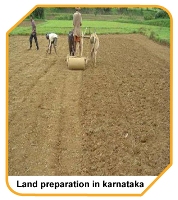
 |
| Top |
|













